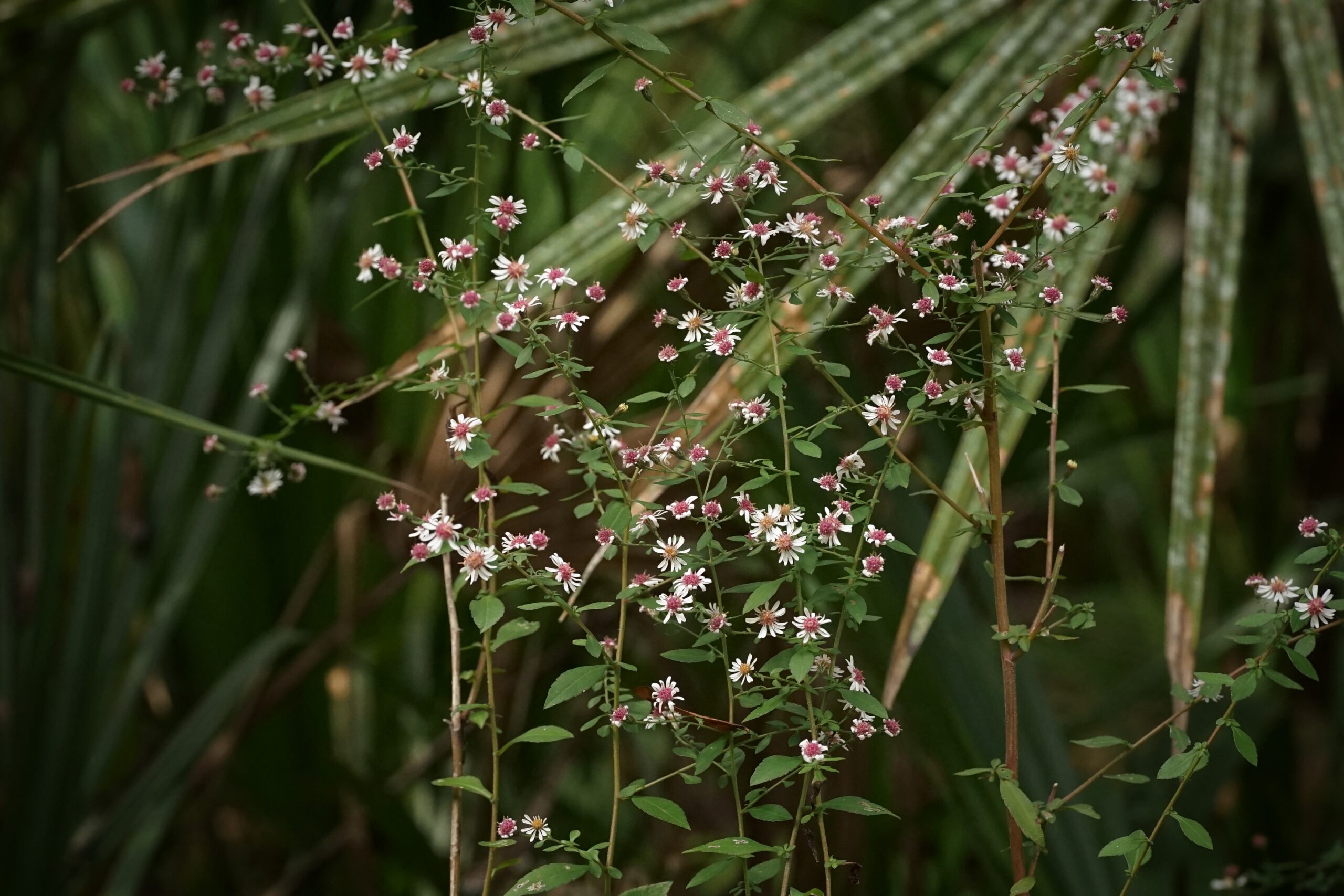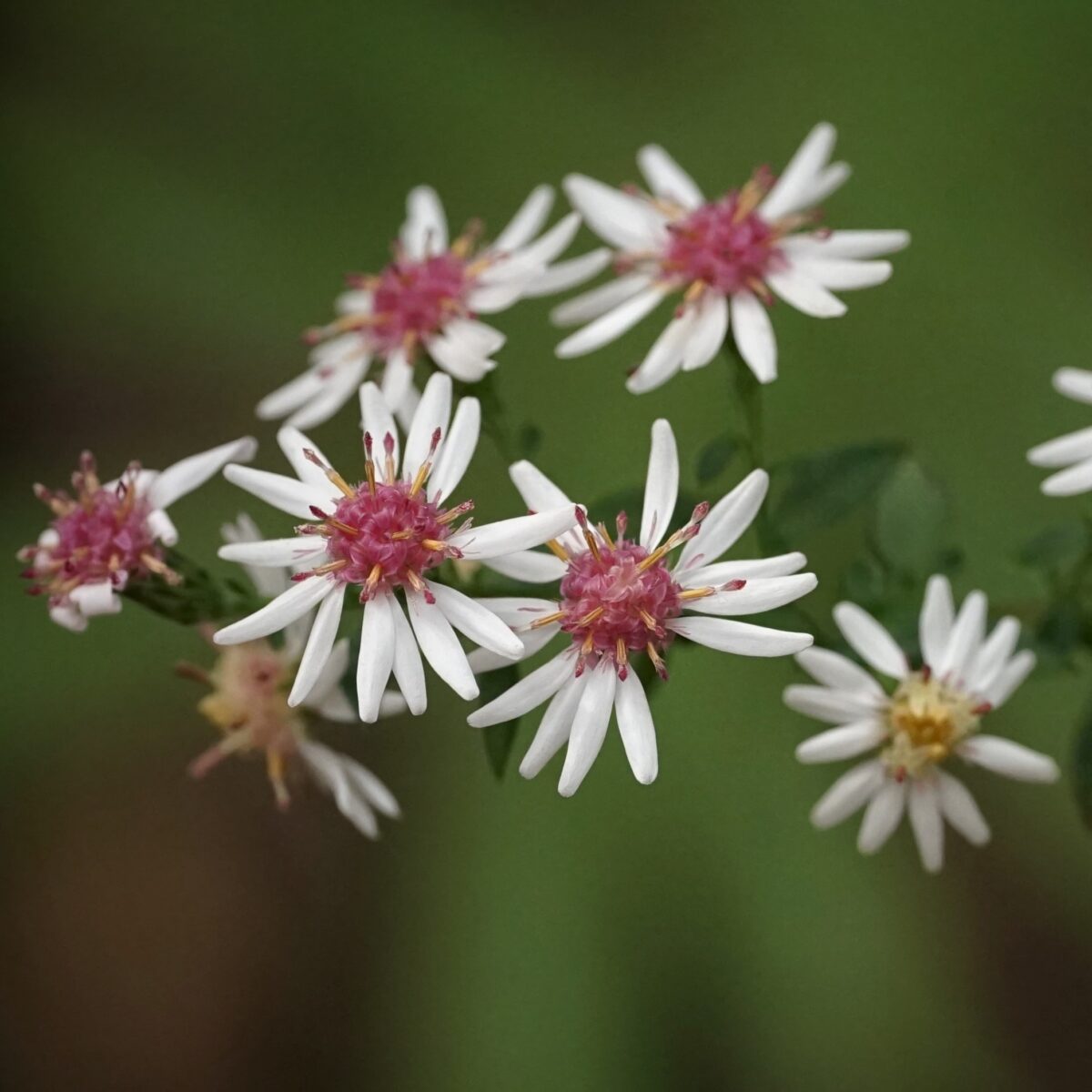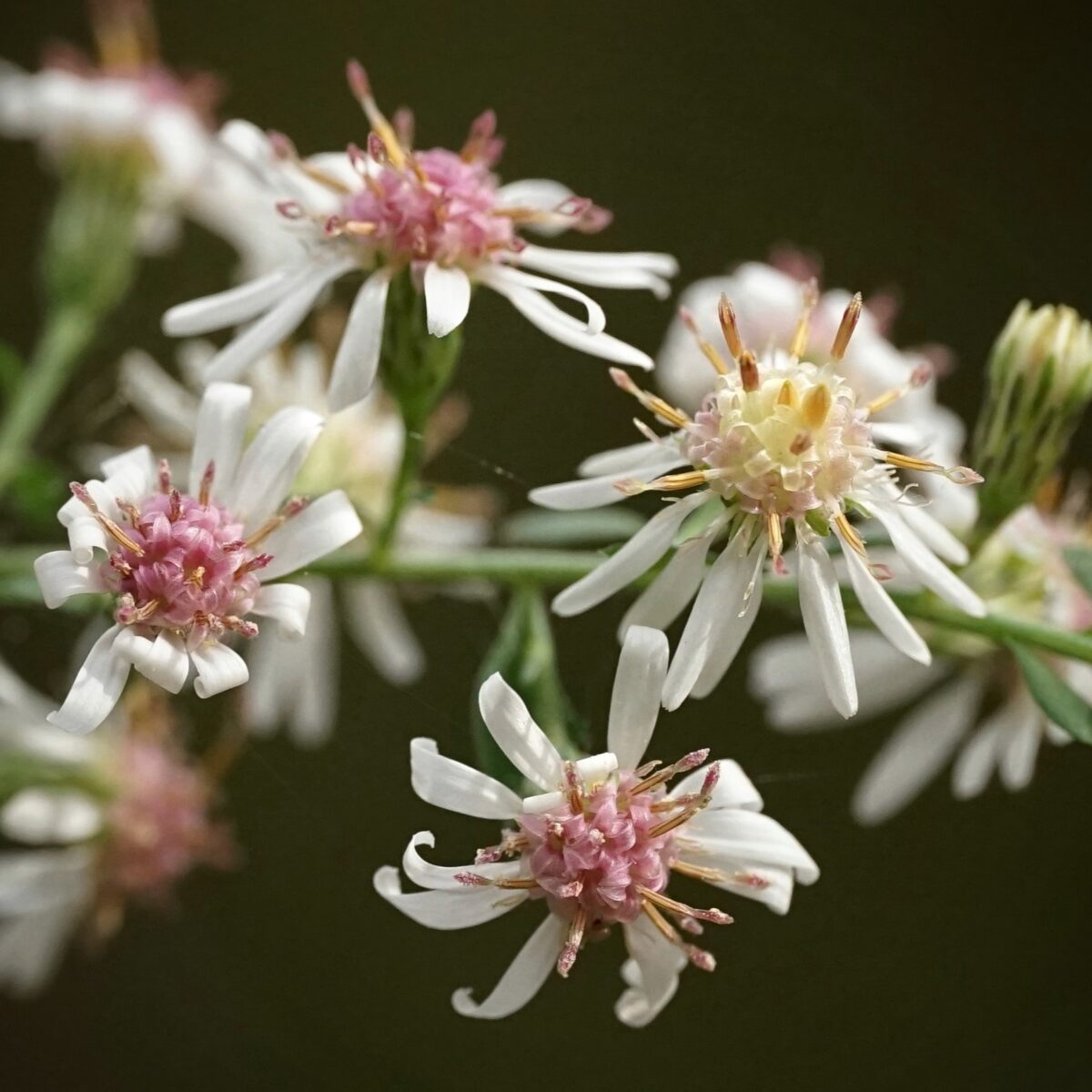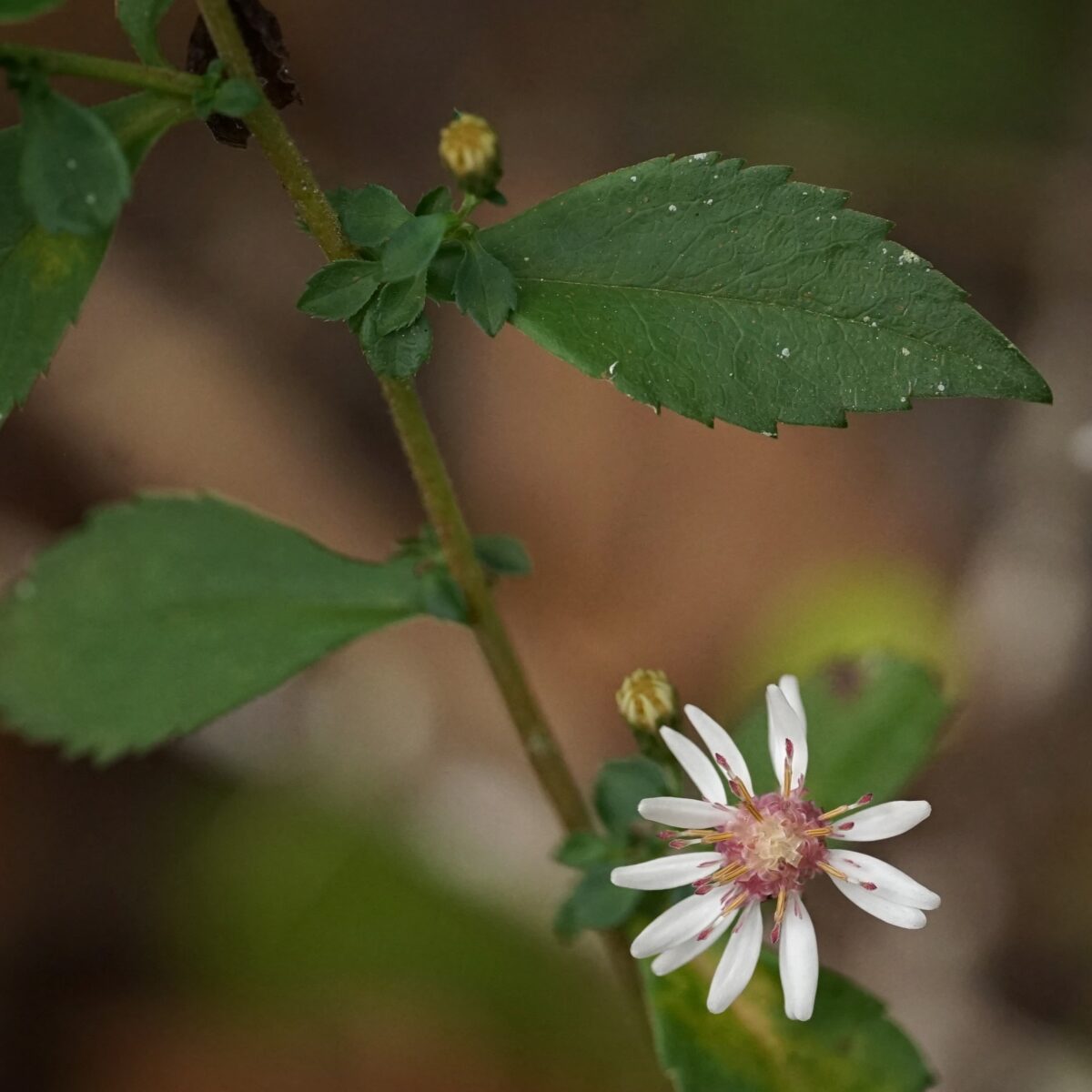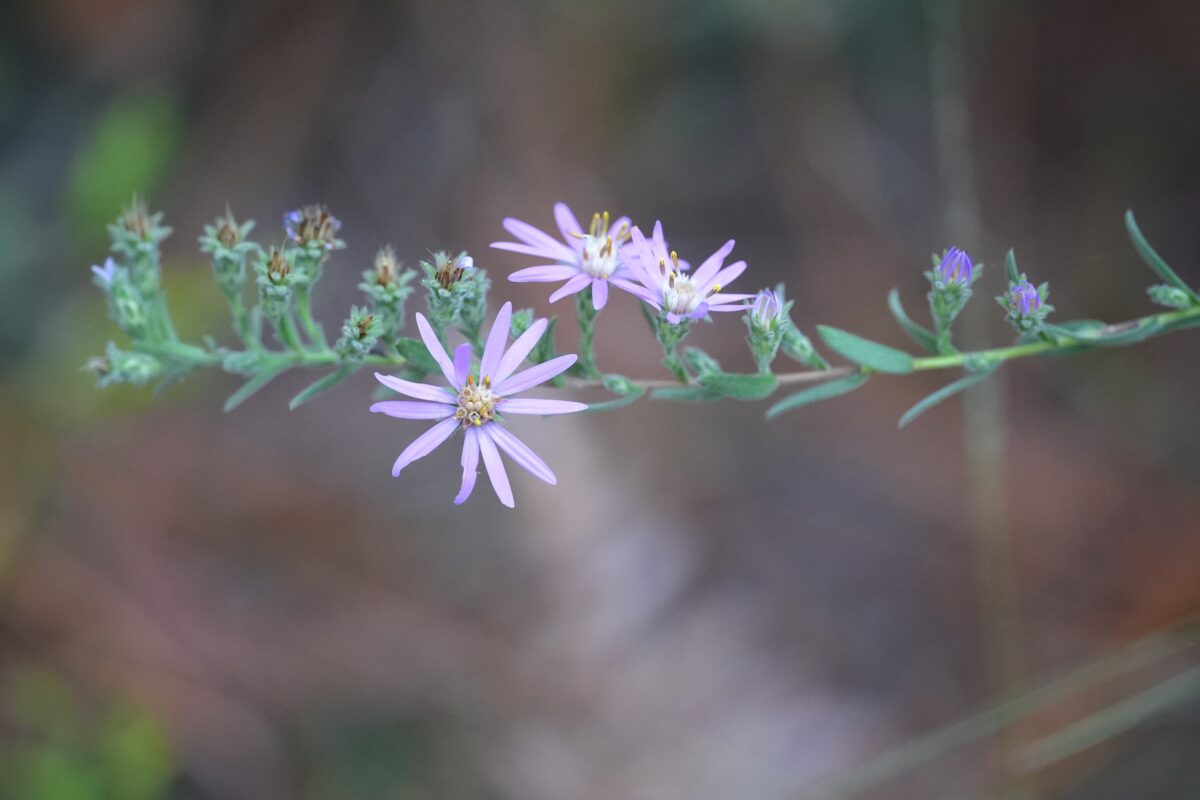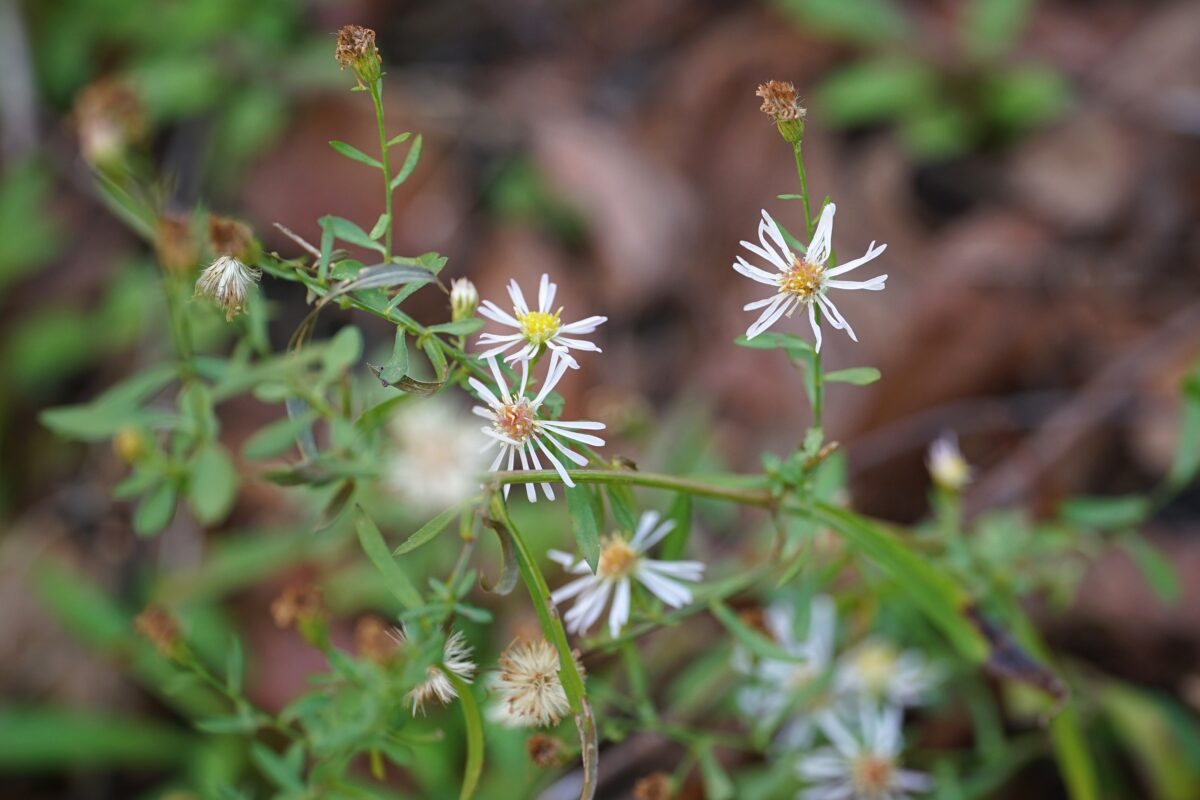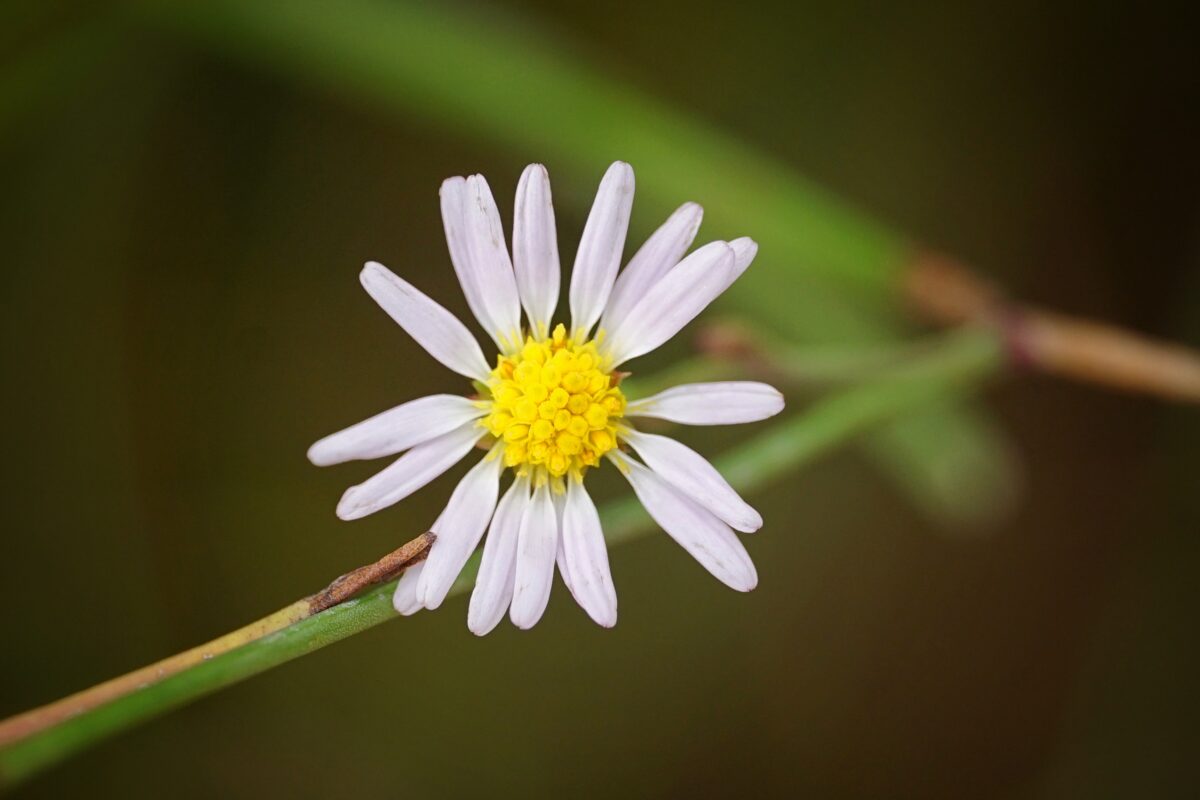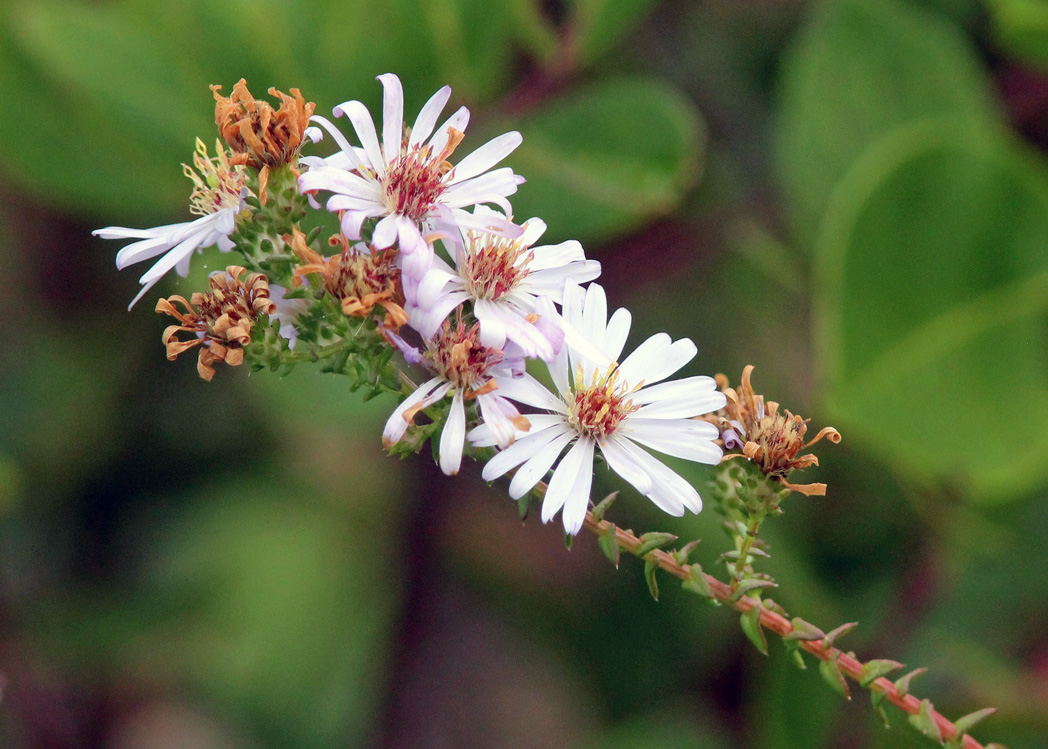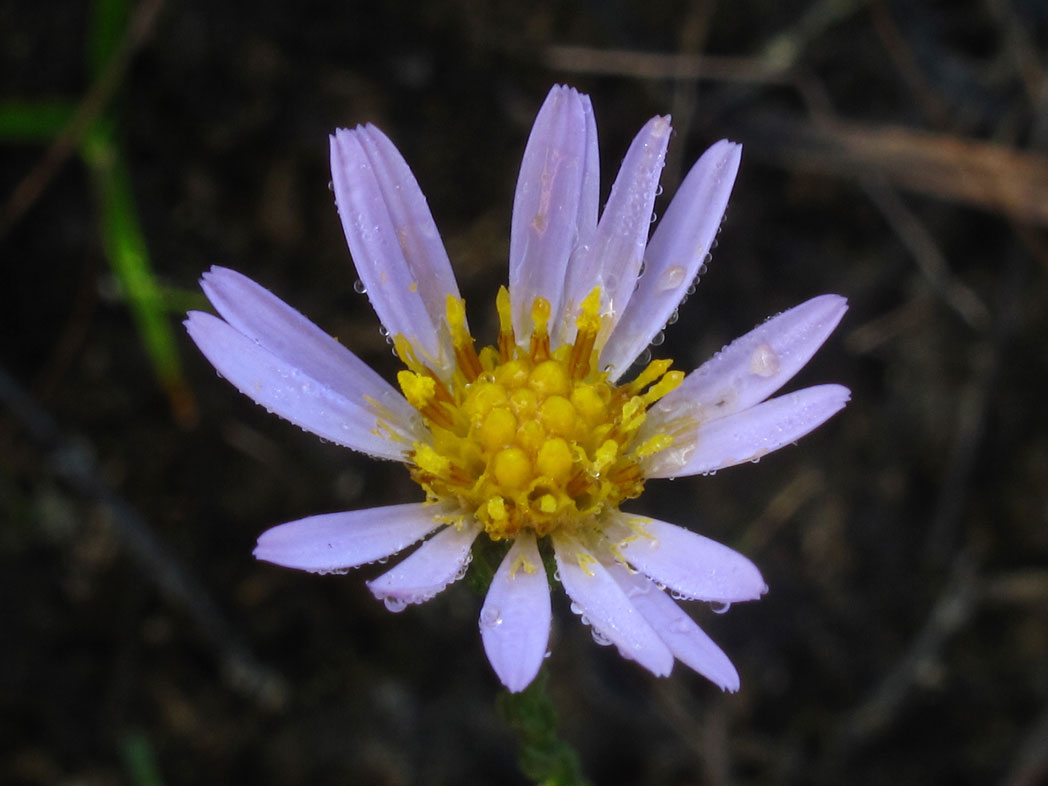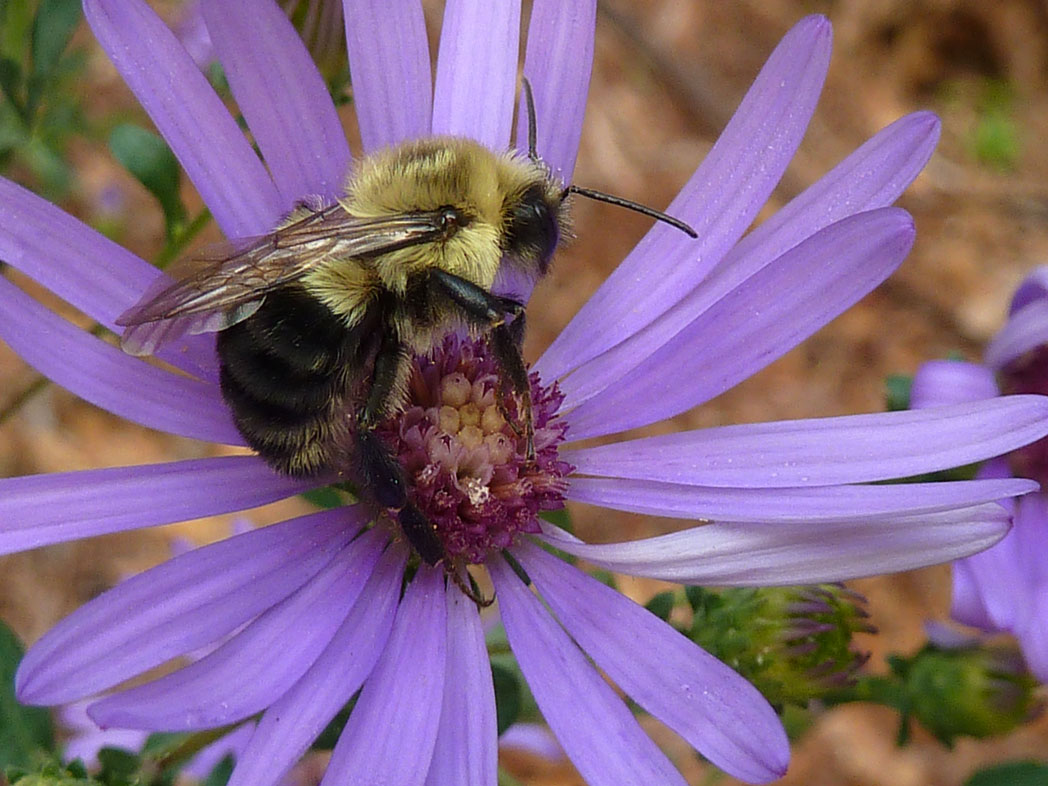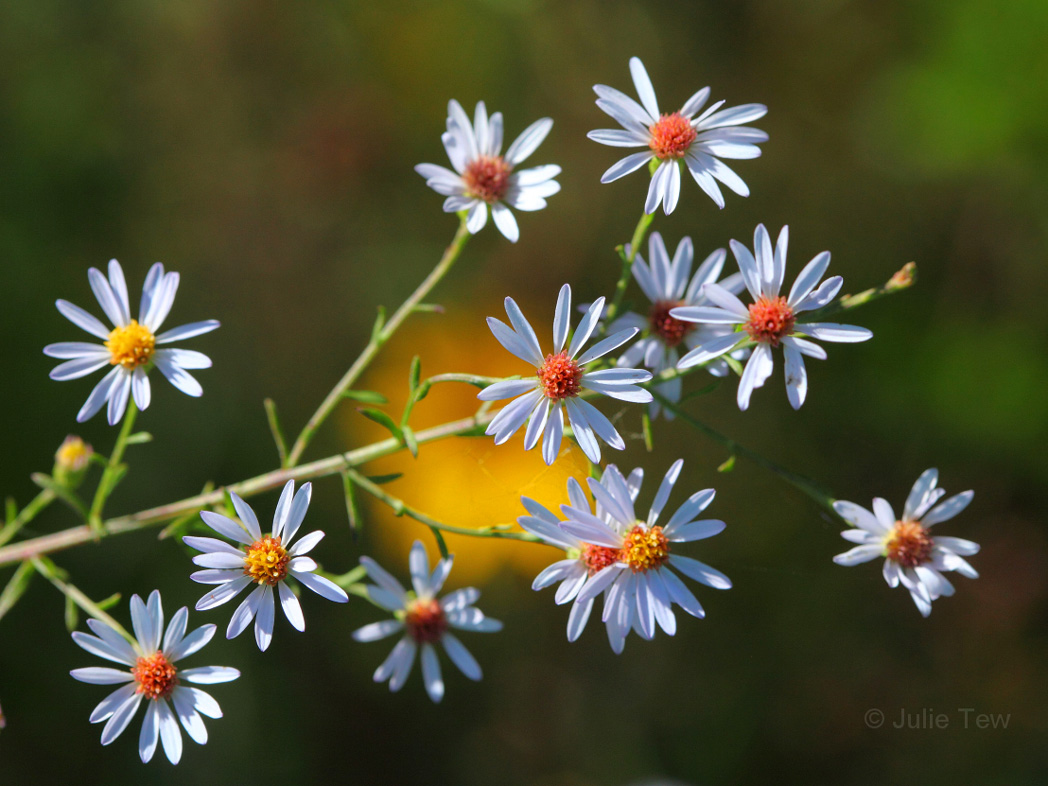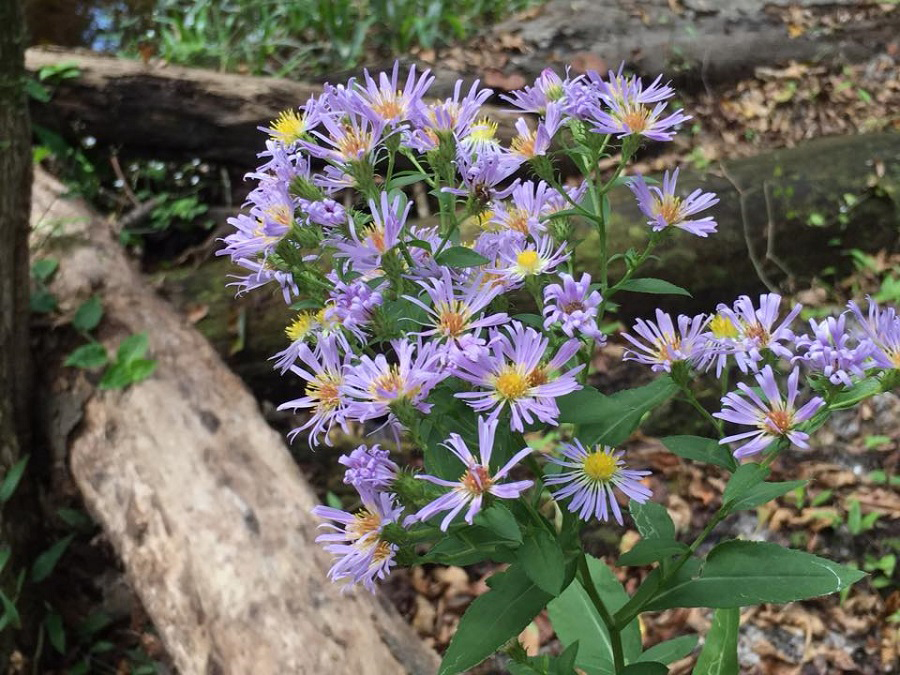Calico aster
Pictured above: Calico aster (Symphyotrichum lateriflorum) by Emily Bell. Click on terms for botanical definitions. View post as a PDF.
Calico aster (Symphyotrichum lateriflorum) is a lovely fall-blooming aster that occurs in a wide variety of habitats — from forests to marshes and wet prairies — and ranges across Eastern and into Central North America. Its abundant blooms provide nectar for a high diversity of insects including bumble bees, miner bees, sweat bees, hoverflies and wasps. It is also a larval host for two moth species, the Isabella tiger moth (Pyrrharctia Isabella) and the Green owlet (Leuconycta diphteroides), as well as two butterflies, the Pearl crescent (Phyciodes tharos) and the Silvery checkerspot (Charidryas harrisii).
One to five reddish, purplish or green stems emerge from Calico aster’s roots and bear numerous slender straggly branches laden with flowers. Clusters of flowers grow on one side of the branch and each flowerhead consists of 7-15 white to pale purple ray florets and 8-16 yellow to purple disc florets. The common name Calico refers to the disc flowers, which start out yellow and mature into purple, so that there are often different colored flowers on the same plant. Calico aster’s leaves are alternate and have saw-toothed edges. They vary from oblanceolate to ovate and are largest at the base, becoming smaller along the stems and branches. Seeds are a grey or tan cypsela with white to pinkish pappi.
Members of the Symphyotrichum genus were once classified in the genus Aster, which contained over 600 species. All have since been reclassified into 10 different genera. The genus name Symphyotrichum is from the Greek sýmphysis, meaning “growing together,” and thríx, or “hair.” It refers to a basal ring of hairs or bristles (pappi) thought to occur on New England aster (Aster novi-belgii, now Symphyotrichum novi-belgii); however, this characteristic is absent in most modern Symphyotrichum species.
The species epithet lateriflorum is a combination the Latin words lateri, meaning “side” and florum, meaning “flower.” It refers to the way the flowers grow on one side of the branches.
Family: Asteraceae (Aster, composite or daisy family)
Native range: North Florida into Central Florida as far as Lake County
To see where natural populations of Calico aster have been vouchered, visit florida.plantatlas.usf.edu.
Lifespan: Perennial
Soil: Clay to loamy sand
Exposure: Full sun to part shade
Growth habit: Up to 5 feet and branching
While commercially available in some parts of its range, no Florida ecotypes of Calico aster are currently available. Visit a natural area to see it.
Learn more about Calico aster from the Institute for Regional Conservation.
For information on other Symphyotrichum species, see these resources:

